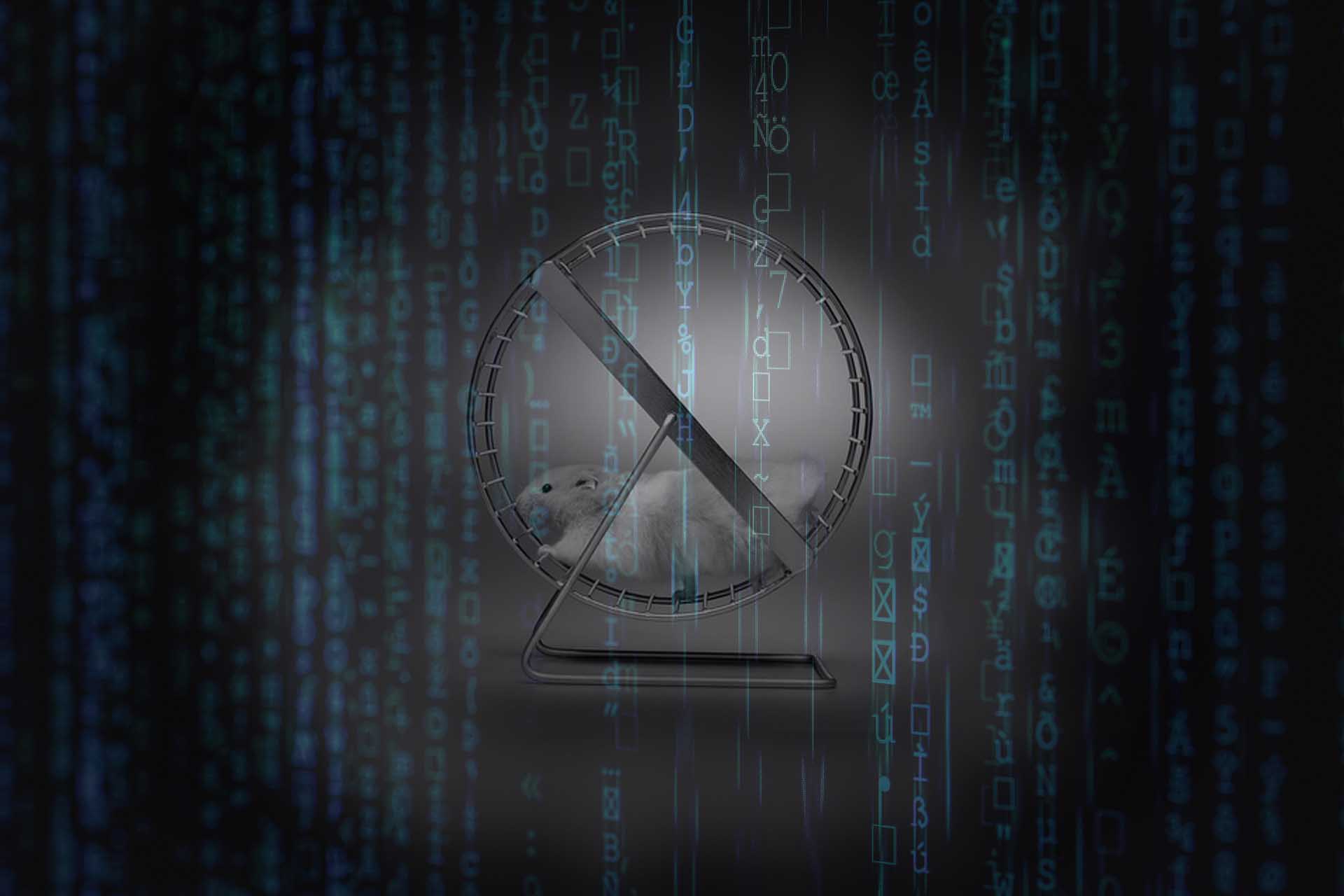Between stimulus and response
Well, how is your stimulus-response space?
Maybe you have never heard of this space; but you probably know the expressions “have a thin skin” or a “short fuse”. They indicate that people act impulsively, get nervous quickly or react irritably. For some, the behavior of superiors, colleagues or customers repeatedly lights the fuse, which is far too short; for others, even minor things threaten to explode.
It doesn’t have to be like that. With a larger stimulus-response space, even impulsive people become more confident and satisfied.
The stimulus-response space
The stimulus-response space (also called stimulus-response chain or stimulus-response pattern) is a concept from psychology and behavioural science. It was first described by the psychologist Ivan Pavlov and addresses the response of living organisms to certain stimuli.1 Simply put, behavior is determined by a chain of responses to stimuli. When an organism is exposed to a certain stimulus, this leads to a reaction. This reaction can in turn trigger a new stimulus, to which the organism reacts in turn.
The concept of the stimulus-response space is used, for example, in behaviour therapy. There it is used to break negative behavioural patterns and to reinforce positive reactions.
The Austrian psychologist Viktor Frankl is (wrongly) credited with the following quote*:
“Between stimulus and reaction lies a space. In this space lies our power to choose our reaction. In our reaction lies our development and our freedom.”
And the Persian mystic Jalāl ad-Dīn Muhammad Rūmī writes:
“Between stimulus and reaction there is a space: only there can encounter take place. Between stimulus and reaction there is a space: only there can healing and development take place. Between right and wrong there is a field. That is where we meet.”
Selfcoaching:
If you would like to do something for yourself already at this point, stop for a moment and take some notes. After reading this article, perhaps a few hours apart, revisit these questions and see if anything has changed.
- What happens spontaneously inside you when you read these quotes? What do you think, what do you feel?
- What are your associations with the keywords encounter, healing and development?
Acting reflexively or riding the brain lift
A reflex is an involuntary reaction of an organism to a stimulus from the environment. We humans are also familiar with involuntary reactions; in the past, they were often essential for survival, and in fact they can be extremely significant even today. In a fraction of a moment, the brain stem, the oldest part of our brain, decides between attack, flight or freezing.2
In the case of a prey predator that is very fast but has poor vision and reacts to sounds or fast movements, it makes sense, for example, to stand still. An attack is a good idea if you are probably stronger and a flight if you are supposed to be faster.
Transferred to an everyday world or a working day without predators: Is it smart to see red with anger just because someone snatches a parking space from under your nose? Is it smart to treat customers or employees with contempt just because you expected something different from them? Is it wise to react impulsively towards superiors?
To really be able to answer these questions, you need the active neocortex (evolutionarily the youngest part) of the brain.3 With his explanatory model of the brain lift, Gerald Hüther describes how people can consciously ride from the brain stem – the “lowest level” – to the neocortex – the “top level of the brain” – in order to carefully weigh things up again and think clearly.4 Sounds good, doesn’t it?
Reducing tension and changing habits
We are probably all aware that those who “see red with anger” cannot think clearly. Rationality has no chance. Something similar happens with other strong – even positive – emotions: Access to reason decreases rapidly.
In the wake of tension,
- people don’t think for long,
- are impatient,
- tend to seek immediate gratification and
- overlook long-term disadvantages.
The desire for revenge, for example, is accompanied in the short term by a feeling of triumph and satisfaction, but with a little distance it often leads to a “hangover” and regret for the impulsive action. We know this feeling of regret, for example, when we have eaten or drunk too much too quickly, said something inappropriate to our counterpart or even caused major damage. In such situations, at the latest, we realise that it is time to break out of such habits.
Dealing with personal impulsivity and relearning thanks to neuroplasticity
The good news is that impulsivity is not completely and unchangeably “hard-wired”.5 With the help of regular training, it can to a large extent be channelled into sensible paths.6
The “primer” for appropriate change is an active relaxation technique. My favourite self-management technique is the “X-process”, which also helps to interrupt patterns.7 It also works preventively. If people succeed in reducing their personal stress level, they can often react more confidently. The thin skin becomes thicker, the short fuse longer. Building on relaxation, sufferers learn to recognise the individual triggers that lead to ‘adverse’ reactions.
Selfcoaching:
If you want to do something more for yourself right now than just reading this article, stop again for a moment and take some notes on these tasks:
- Collect some examples of your impulsiveness, small and big, that you regret and would like to change.
- Sort them on a temperature scale from “lukewarm” to “hot”.
- Make yourself a training plan and practice slowly upwards starting with the “lukewarm” examples. Ultimately, this works like fitness training where you start with easier exercises.
The important thing is that the demand is strenuous but manageable. Thanks to neuroplasticity8, you not only learn new things like a new language, but also “overwrite” old unfavourable behaviours with new more helpful ones, albeit much more laboriously.
My best methods for this are based on Cognitive Behavioural Therapy (CBT), which from a clinical-scientific point of view is the preferred psychotherapy for anxiety disorders9 and depression, but which has also proven successful for non-disease problems. It is essentially based on the fact that a distressing feeling or unwanted reaction occurs through a common trigger. The key is the individual assessment (ABC model). If this component did not exist, all people would be equally afraid of the same things, for example. The solution is to reassess towards a more helpful response.
If people do not have or need a corresponding clinical diagnosis, they can overcome stressful patterns with the methods of CBT in the form of regular training. This includes impulsivity. Further developments such as integrative CBT10 “boost” the effectiveness of this approach. Personally, I have had good experiences with methods such as SFBT, MCT, MBSR/MBCT, which I tailor to individual needs in my work as a growth facilitator.
Conclusion
People can learn to lengthen their own short fuse by addressing their stimulus-response space and individual impulsivity. Even if old patterns of thinking or behaviour can never be completely eradicated11, it is often possible to increase the space between stimulus and reaction. However, change is not a sprint, but rather a marathon. At the finish line
- a calmer, more confident and peaceful life,
- a more sociable interaction with other people,
- more tolerable fellow human beings,
- co-creation instead of struggle,
- possibly better career opportunities and
- often also lower turnover in organisations.
For those situations that are “hot” on the temperature scale, it can also be helpful to use external help. If needed, I will be happy to support you.
Notes (some in German):
Mario Hauff would be happy to tell you more in an information session and find out with you what the best support for you might look like. You can easily get in touch at https://www.angstlotse.de/.
* This quotation corresponds to the basic idea of Viktor Frankl’s logotherapy and existential analysis, but it is not from Frankl. Steven Covey, author of “7 Ways to Effectiveness”, writes in the preface to “Pattakos” (2004) that he discovered these lines in a library during a sabbatical year in Hawaii. In his opinion, they confirmed Frankl’s central teachings, but unfortunately he had not noted down the name of the author. Because of the correspondence in thought, he assumed it could have come from Frankl, but the statement is not to be found in his writings. Source: Lilian Loton
[1] Ivan Pavlov described the stimulus-response space as part of his research on conditioning reflexes in dogs. He showed that dogs can learn to respond to certain stimuli, such as the ringing of a bell, with certain reactions, such as salivating.
[2] Der Schaltkreis der Angst
[3] Baustelle im Kopf
[4] Das Hirnaufzugsmodell nach Gerald Hüther
[5] The Five-Factor Model of Impulsivity-Like Traits and Emotional Lability in Aggressive Behavior
[6] Epidemiologic and clinical updates on impulse control disorders: a critical review
[7] Einführung in den X-Prozess
[8] Neuronale Plastizität: Das formbare Gehirn
[9] Behandlung von Angststörungen
[10] Was ist Integrative KVT?
[11] Extinction Learning: Behavioural, Neural and Clinical Mechanisms, https://gepris.dfg.de/gepris/projekt/179167628
If you like the post or want to discuss it, feel free to share it with your network.
Mario Hauff has published more articles in the t2informatik Blog, including:

Mario Hauff
Dipl.-Ing. Mario Hauff is the Angslotse. He guides individuals and organisations through difficult phases aggravated by fear and uncovers their potential with them. Like a nautical pilot he goes “on board” until “safe waters” are reached again and imparts self-efficacy and self-empowerment. After 20 years as an electrical engineer for microelectronics in an American company, he now offers individual and group coaching sessions, workshops and keynote lectures on growth in safety with state-of-the-art, scientifically sound findings.
“Why it works without fear”: You may stand at a canyon or in front of the photo wallpaper of a canyon.


